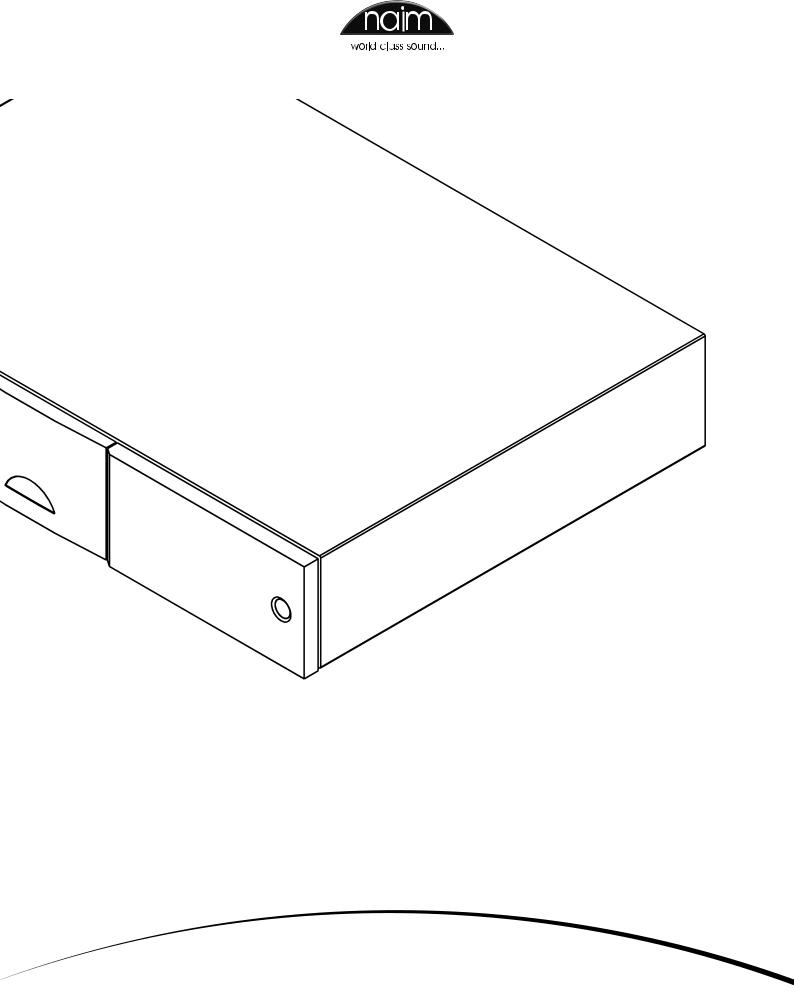Naim CD555PS, SUPERCAP, HI-CAP, NAPSA, NAPSC owners manual

o w n e r s m a n u a L
P O W E R |
S U P P L I E S |
E N G L I S H D E U T S C H |
F R A N Ç A I S I T A L I A N 0 |

|
Contents |
|||
|
Page |
Section |
|
|
SAFETY INSTRUCTIONS |
E1 |
1 |
Connections |
|
In order to comply with current European safety regulations |
E1 |
2 |
Mains Power |
|
E2 |
3 |
General Installation |
||
it is essential that the Naim loudspeaker connectors |
||||
E3 |
4 |
CD555PS, Supercap and XPS |
||
supplied with amplifiers and loudspeakers are used. |
||||
Do not under any circumstances allow anyone to modify |
E4 |
5 |
Hi-Cap, Flatcap 2x, NAPSA and NAPSC |
|
E5 |
6 |
Power Supply Specifications |
||
your Naim equipment without first checking with the factory, |
||||
your retailer, or your distributor. Unauthorised modifications |
E5 |
7 |
Declarations of Conformity |
|
will invalidate your guarantee.
Equipment must not be exposed to dripping or splashing and no objects filled with liquid, such as vases, should be placed on the equipment.
For your own safety do not under any circumstances open Naim equipment without first disconnecting it from the mains.
Warning: an apparatus with CLASS I construction shall be connected to a mains socket outlet with a protective earthing connection.
Where the mains plug or an appliance coupler is used as the disconnect device, the disconnect device shall remain readily operable. To disconnect the equipment from the mains remove the mains plug from the mains outlet.
The following label is attached to all mains powered equipment:
w a r n i n g
This apparatus must be earthed
note
This equipment has been tested and found to comply with the relevant EMC and Safety Standards, and, where
applicable, also complies with the limits for a class B digital device, pursuant to Part 15 of the FCC Rules.
These limits are designed to provide reasonable protection against harmful interference in a residential installation. This equipment generates, uses and can radiate radio frequency and, if not installed and used in accordance with the instructions, may cause harmful interference to radio communications. However, there is no guarantee that interference will not occur in a particular installation. If this equipment does cause harmful interference to radio or television reception, which can be determined by turning off and on, the user is encouraged to try to correct the interference by one or more of the following measures:
•Reorient or relocate the receiving antenna.
•Increase the separation between the equipment and the receiver.
•Connect the equipment into an outlet on a circuit different from that to which the receiver is connected.
•Consult your Naim retailer or an experienced radio/TV technician for help.

Introduction
Naim Audio products are conceived with performance as the top priority. Careful installation will help ensure that their full potential is achieved. This manual covers all power supplies. It begins with some general installation notes and statutory safety warnings. Product specific information begins in Section 4.
1 Connections
It is important for both safety and performance that the standard cables supplied are not modified.
1.1 Interconnect Cables
If options are available with your equipment and installation, DIN interconnect sockets should be used in preference to RCA Phono sockets. One end of each Naim interconnect cable is marked with a band to establish
its correct orientation. The band denotes the end that connects to the signal source.
Interconnect plugs and sockets should be kept clean and free from corrosion. The easiest way to clean them is to switch off the equipment, pull the plugs out of their sockets, and push them back in again. Contact cleaners and “enhancers” should not be used as the film they deposit may degrade the sound.
1.2 Loudspeaker Cables
Loudspeaker cables are vitally important. They should each be at least 3.5 metres long and of equal length. The recommended maximum is normally 20 metres although longer cables may be viable with some Naim amplifiers.
Some Naim amplifiers are designed only to work with Naim loudspeaker cable and using alternatives may degrade the performance or even damage the amplifier. Other Naim amplifiers can be used with any high quality loudspeaker cable although we recommend that Naim loudspeaker cable is used. Naim loudspeaker cable is directional and should be oriented so that the printed arrow points towards the speakers. The Naim loudspeaker connectors supplied are designed to comply with European safety legislation and must be used.
Contact your local retailer or distributor for further advice on loudspeaker cables and connectors.
2 Mains Power
Where fused plugs are used 13 amp fuses should be fitted. Fuses of a lower rating will fail after a period of use. Do not wire voltage dependent resistors or noise suppressors into mains plugs. They degrade the mains supply and the sound.
2.1 Mains Plug Wiring
In some territories a mains plug may need to be fitted to the supplied mains lead. As the colours of the wires in
the mains lead may not correspond with the coloured markings identifying the terminals in the plug proceed as follows:
The wire coloured GREEN-AND-YELLOW must be connected to the terminal in the plug marked by the letter E or by the safety earth symbol or coloured GREEN or
GREEN and YELLOW.
The wire coloured BLUE must be connected to the terminal in the plug marked with the letter N or coloured BLACK.
The wire coloured BROWN must be connected to the terminal in the plug marked with the letter L or coloured
RED.
2.2 Equipment Fuses
Mains powered Naim Audio equipment is fitted with a mains fuse on the rear panel adjacent to the mains input socket. Replace it if necessary only with the spare fuse supplied or with an identical fuse. Repeated failure of the fuse points to a fault that should be investigated by your retailer or Naim itself.
2.3 Non-rewirable Mains Plugs
If a non-rewirable plug is cut from a mains lead (for whatever purpose) the plug MUST be disposed of in a way to render it totally useless. Considerable shock hazard exists if the cut-off plug is inserted into a mains outlet.
2.4 Mains Circuits and Cables
A hi-fi system usually shares a mains circuit with other household equipment some of which can cause distortion of the mains waveform. This distortion can in turn lead to mechanical hum from mains transformers. Some Naim transformers are large in size, making them relatively sensitive to such distortion, and it may be necessary
to take account of transformer hum when siting your equipment.
Transformer hum is not transmitted through the speakers and has no effect on the performance of the system; however, a separate mains circuit may reduce it. Such a circuit (ideally with a 30 or 45 Amp rating) will also generally improve system performance. Advice on the installation of a separate mains circuit should be sought from a qualified electrician.
Do not substitute alternative mains leads and plugs to those supplied. They are selected to offer the best possible performance.
E
